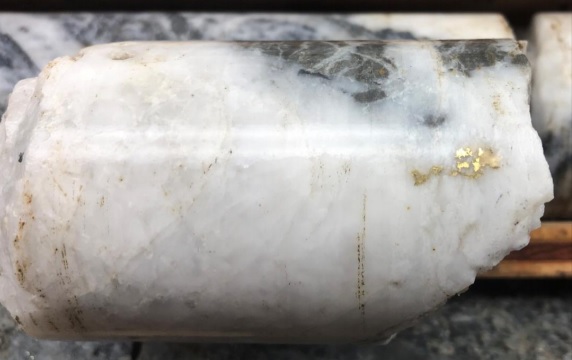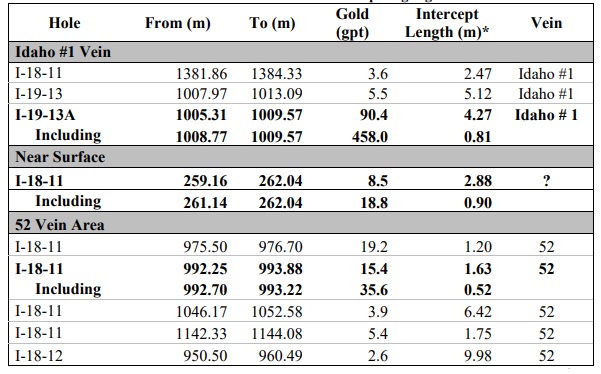
Rise Gold (RISE.C) is still drilling on its Idaho-Maryland gold project in California, where it continues to get a better understanding of the mineralization at this past-producing gold mine.
Hole 13A got the most attention as the drill bit intersected the Idaho#1 vein at a downhole depth of just over 1,000 meters where it encountered 4.27 meters at 90.4 g/t gold (which indeed is almost 3 ounces of gold per tonne of rock). The majority of the gold was situated in a narrower 81 centimeter interval which included the presence of visible gold. Not surprising when those 81 centimeters assayed 458 g/t gold.
4.27 meters at 90.4 g/t make for a great headline, but if we would remove the 81 centimeters from the wider interval, the remaining 3.46 meters would contain approximately 4.34 g/t gold. Less impressive, but definitely acceptable as a residual value around the ultra high-grade interval.

Rise also reported the assay results of hole 11 which discovered a new vein (2.88 meters of 8.5 g/t) and also intersected the 52 Vein area at a depth of around 1,000 meter downhole. Additionally, this hole was drilled deep enough to also encounter the same Idaho#1 vein that returned the ultra-high grade interval in hole 13A, but the 2.47 meters containing 3.6 g/t gold in the zone where hole 11 intersected the Idaho#1 vein is obviously a bit less impressive.
Rise Gold closed a C$1.83M financing in the first week of March but as the company already had a working capital deficit of almost C$700,000 in January, Rise will very likely have to tap the equity markets again in the current quarter.
Go to Rise’s website
The author has no position in Rise Gold. Please read the disclaimer

